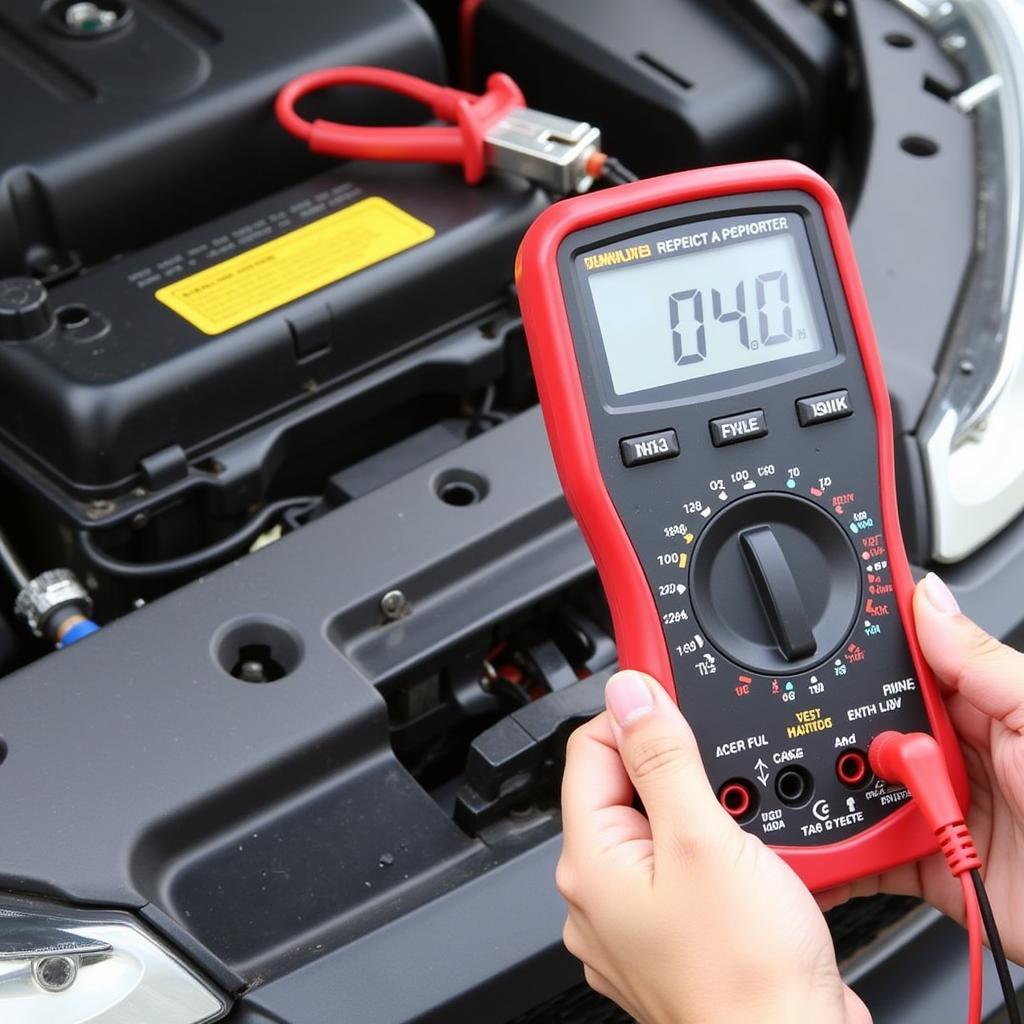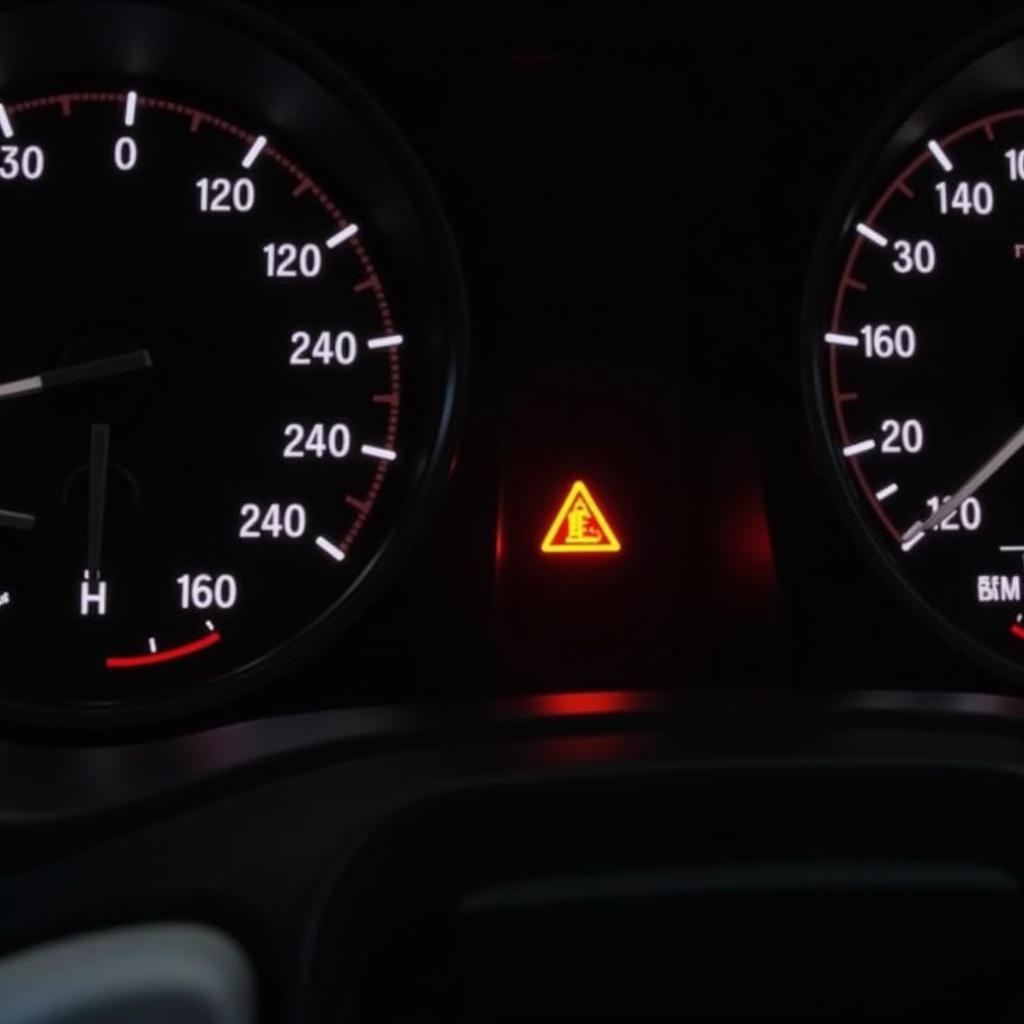A slow drain on your car battery can be incredibly frustrating, leaving you stranded at the most inconvenient times. Within the first few lines of this article, we’ll explore common causes of this issue, how to diagnose them, and finally, how to fix them. We’ll also cover preventative measures to help you avoid this headache altogether. So, if your car battery keeps dying, read on.
 Testing a car battery for slow drain
Testing a car battery for slow drain
What Causes a Car Battery Slow Drain?
Several culprits can cause a slow drain on your car battery. These can range from simple things like leaving a light on to more complex issues with the car’s electrical system. Some common causes include faulty wiring, malfunctioning components like alternators or starters, parasitic draws from aftermarket accessories, and even extreme temperatures. Understanding the symptoms of a failing battery is crucial for early diagnosis and can save you from unexpected breakdowns.
Have you ever left your interior lights on overnight? That’s a classic example of a car battery drain, but a slow drain is often more insidious. It’s a gradual loss of power that might take days or even weeks to fully deplete the battery. This can be especially tricky to diagnose as the symptoms can be subtle. You may notice your car starting sluggishly in the mornings, dimming headlights, or flickering interior lights. Even a car battery connection problem can contribute to a slow drain.
Diagnosing the Slow Drain on Your Car Battery
Pinpointing the exact cause of a slow car battery drain involves a systematic approach. Start by checking the obvious – interior lights, glove compartment light, trunk light. Make sure they’re all off. If they are, you’ll need to delve a little deeper. One common tool used is a multimeter. This device allows you to measure the current draw when the car is off. Anything above 50 milliamps is usually considered excessive and indicative of a slow drain.
How to Use a Multimeter to Find a Parasitic Draw
Using a multimeter to find a parasitic draw is a relatively simple process. First, disconnect the negative cable from your battery. Then, connect the multimeter in series between the negative battery terminal and the negative battery cable. With the car off and all accessories turned off, observe the reading on the multimeter. This will tell you how much current is being drawn from the battery. A slow drain on car battery can be a real nuisance, but with the right tools and a little patience, you can identify the problem.
“A multimeter is an essential tool for any DIY car enthusiast. It’s like having a detective on hand for your car’s electrical system,” says John Smith, a seasoned automotive electrician. “With a multimeter, you can track down even the most elusive electrical gremlins.”
Fixing the Slow Drain: From Simple Fixes to Professional Help
Once you’ve identified the source of the drain, fixing it can range from simple to complex. If it’s a faulty dome light, simply replace the bulb. If it’s a more complicated issue like a malfunctioning alternator, you may need to consult a professional. There are also remote diagnostic and programming services available that can identify and even fix some software-related issues. Knowing the symptoms of a failing battery can help you determine the severity of the problem and whether or not a professional is needed.
“Don’t underestimate the impact of a weak battery on your car’s performance,” advises Maria Garcia, an automotive software engineer. “Everything from the engine to the infotainment system relies on a healthy battery. Regular checks and timely maintenance can save you a lot of trouble down the road.”
Preventing Future Car Battery Slow Drains
Preventing a car battery low warning and slow drain is often easier than fixing one. Regularly inspect your battery for corrosion and clean the terminals. Be mindful of what you plug into your car’s 12V outlet. Some devices can draw power even when the car is off. Also, remember to double-check that all lights and accessories are off before leaving your car. A particular case study, the mitsubishi lancer battery drain, highlights the importance of model-specific troubleshooting.
In conclusion, a car battery slow drain is a common problem, but it’s one that can be diagnosed and fixed. By following the tips and techniques outlined in this article, you can save yourself the frustration and expense of a dead battery. Remember to be proactive in maintaining your car’s electrical system, and you’ll be less likely to experience this issue. So, the next time you suspect a slow drain on your car battery, don’t panic! You now have the knowledge to tackle it head-on.


